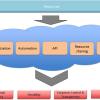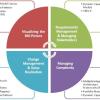Strategic advice to leverage new technologies
Technology is at the heart of nearly every enterprise, enabling new business models and strategies, and serving as the catalyst to industry convergence. Leveraging the right technology can improve business outcomes, providing intelligence and insights that help you make more informed and accurate decisions. From finding patterns in data through data science, to curating relevant insights with data analytics, to the predictive abilities and innumerable applications of AI, to solving challenging business problems with ML, NLP, and knowledge graphs, technology has brought decision-making to a more intelligent level. Keep pace with the technology trends, opportunities, applications, and real-world use cases that will move your organization closer to its transformation and business goals.
Recently Published
Firmitas, Utilitas, Venustas
Humans have always exploited data to achieve social, cultural, and technological advances. In this digitized world, there is an obvious need to harness and manage this data more efficiently and effectively. In this Executive Update, we discuss cloud computing, Big Data, the Internet of Things (specifically, mobile applications), and analytics, as well as recent revolutionary developments occurring as a result of the amalgamation of these four technologies.
Visual Discovery
Software As an Asset
In a recent Advisor I took the stance that nearly all software development is part of what we call an infinite game and therefore should be managed like a product rather than a project, which is a management approach for finite games (see "On Projects, Products, and Gaming Theory").
The New Techniques of Fifth-Generation EA: Part I
An earlier Executive Update of mine described enterprise architecture using an approach similar to the various epochs in building architecture as a way to depict the different styles of EA through the years.1 This historical perspective revealed five














